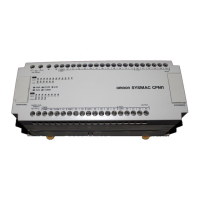494
Glossary
bit designator An operand that is used to designate the bit or bits of a word to be used by an
instruction.
bit number A number that indicates the location of a bit within a word. Bit 00 is the rightmost
(least-significant) bit; bit 15 is the leftmost (most-significant) bit.
bit-control instruction An instruction that is used to control the status of an individual bit as opposed to
the status of an entire word.
block See logic block and instruction block.
building-block PC A PC that is constructed from individual components, or “building blocks.” With
building-block PCs, there is no one Unit that is independently identifiable as a
PC. The PC is rather a functional assembly of Units.
bus A communications path used to pass data between any of the Units connected
to it.
bus bar The line leading down the left and sometimes right side of a ladder diagram. In-
struction execution proceeds down the bus bar, which is the starting point for all
instruction lines.
byte A unit of data equivalent to 8 bits, i.e., half a word.
call A process by which instruction execution shifts from the main program to a sub-
routine. The subroutine may be called by an instruction or by an interrupt.
Carry Flag A flag that is used with arithmetic operations to hold a carry from an addition or
multiplication operation, or to indicate that the result is negative in a subtraction
operation. The carry flag is also used with certain types of shift operations.
central processing unit A device that is capable of storing programs and data, and executing the instruc-
tions contained in the programs. In a PC System, the central processing unit ex-
ecutes the program, processes I/O signals, communicates with external
devices, etc.
CH See word.
channel See word.
character code A numeric (usually binary) code used to represent an alphanumeric character.
checksum A sum transmitted with a data pack in communications. The checksum can be
recalculated from the received data to confirm that the data in the transmission
has not been corrupted.
clock pulse A pulse available at specific bits in memory for use in timing operations. Various
clock pulses are available with different pulse widths, and therefore different fre-
quencies.
clock pulse bit A bit in memory that supplies a pulse that can be used to time operations. Vari-
ous clock pulse bits are available with different pulse widths, and therefore dif-
ferent frequencies.
common data Data that is stored in a memory of a PC and which is shared by other PCs in the
same the same system. Each PC has a specified section(s) of the area allocated
to it. Each PC writes to the section(s) allocated to it and reads the sections allo-
cated to the other PCs with which it shares the common data.
communications cable Cable used to transfer data between components of a control system and con-
forming to the RS-232C or RS-422 standards.

